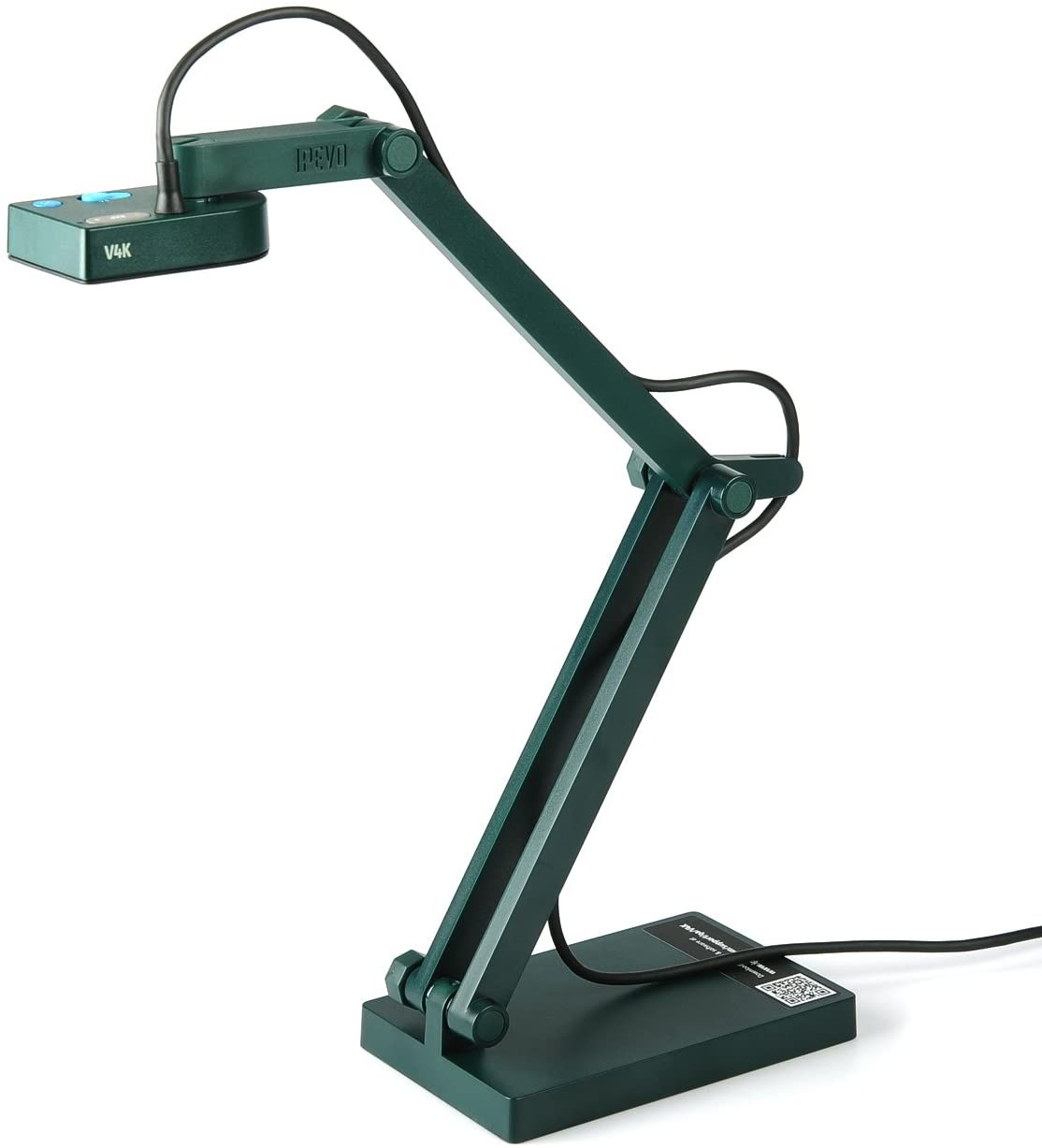







































£102.00*
- Resolution 1920 x 1080 Full HD
- Camera resolution 8 MP
- Focus type Manual & automatic focus


Product information
High-resolution live images with an 8 megapixel camera.
The V4K ultra high-resolution USB document camera is an 8 megapixel camera that captures amazing high-resolution images up to 3,264 x 2,448 pixels, capturing even the smallest details of your documents without pixelation. Whether you use the camera for live presentations, demonstrations, scanning books, magazines, documents or QR codes, text recognition or archiving photos, the V4K will not disappoint.
High frame rate at high resolution for smooth live streaming.
With the V4K, frustrating delays are a thing of the past as you enjoy silky-smooth live streaming in amazing sharpness thanks to the high frame rate at high resolution. You can now stream at up to 30 frames per second in Full HD or up to 15 frames per second in the highest resolution of 3264 x 2448 pixels.
Fast focussing. Minimal interruptions.
The V4K has a fast focussing speed. This means there are only minimal interruptions when you switch between different materials at high resolution. This is very practical when you want to show or compare different materials in class or during a presentation.
Excellent noise reduction and colour reproduction with the CMOS image sensor from Sony. Better performance even in low light conditions.
Noise reduction and colour reproduction make the V4K the ideal presentation tool for darkened classrooms or conference rooms, as the images remain sharp and unpixelated even in low light conditions.
Newly developed bracket with multiple joints.
IPEVO has invested a lot of research into the design of the V4K bracket. It was not only important that you can use the holder to hold materials at different distances and angles, but also that you have the option of quickly and easily tightening joints that have become loose due to intensive daily use. A screw has been attached to each joint for this purpose. This means you can easily stabilise a loose joint by tightening the corresponding screw clockwise with a coin.
Compatible with various software programs and applications.
The V4K can be used with various computer programs and applications as long as they can recognise the video source of the V4K, a standard UVC camera. For example, the camera can be used together with the IPEVO Visualiser software to present your students' work. The software has an intuitive user interface and enables borderless screen display. You can also easily create flipped classroom videos with the camera using video editing programmes such as Camtasia or OBS. You can also combine the camera with video conferencing software such as GoToMeeting, Skype or Google Hangouts.
Technical data
- 8.0 megapixel camera
- Ultra-high resolution with up to 3264 x 2448 pixels
- Autofocus lens
- Up to 30 FPS live video recording (in Full HD)
- USB 2.0 Video Class Interface (UVC)
- Compatible with Mac, Windows PC and Chromebook
- Maximum shooting area: 13.46" x 10.04" (342 mm x 255 mm)
- L x W x H (folded) 10.91" x 3.07" x 1.89" (277 mm x 78 mm x 48 mm)
- Weight: 581 g
- Length USB cable: 150 cm
- Colour:green
- Model name:CDVU-08IP
- Colour:green
- 2-year warranty from date of purchase
Technical data
| Name | IPEVO V4K Ultra High Definition USB document camera |
|---|---|
| Article number | 1000010598 |
| GTIN/EAN | 4712098410895 |
| Manufacturer SKU | CDVU-08IP |
| Model name | V4K |
| Brand | IPEVO |
| Product Type | Visualizer |
| Resolution | 1920 x 1080 Full HD |
| Frames per Second | 30 fps |
| Focus type | Manual & automatic focus |
| Camera resolution | 8 MP |
| Camera sensor | 8MP Sony CMOS Sensor |
| Outputs | 1x USB-A |
| Product width | 27.7 cm |
| Product height | 4.8 cm |
| Product depth | 7.8 cm |
| Weight | 0.581 kg |
| Colour | Green |
| Condition | New |
| Warranty | 36 Month |
| Warranty type | Bringin service Service and support information |
Product safety
| Person responsible for the EU |
|---|
| IPEVO B.V. |
| Beursplein 37 |
| 3011AA Rotterdam |
| Netherlands |
| eusales@ipevo.com |



